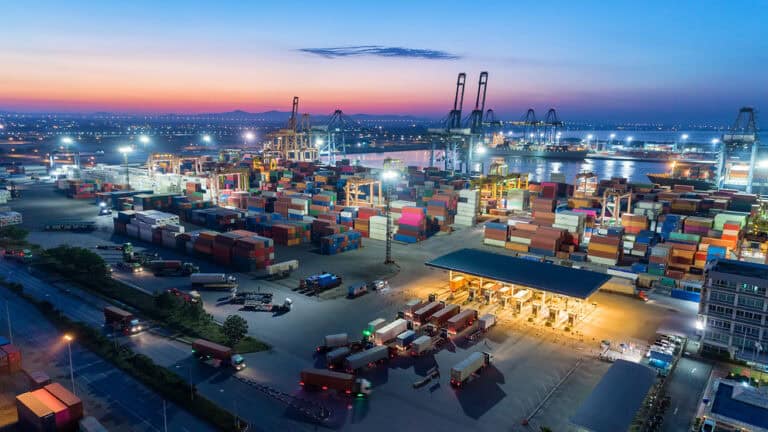
Tariffs are back in the headlines. With the latest round of Trump-imposed tariffs sparking retaliatory measures from major trading partners, the impact on businesses, consumers, and the global economy is once again under the microscope. Whether it’s higher prices at the store, tensions in international trade, or shifts in manufacturing, these policies have real-world consequences.
But what are tariffs, and how are they different from duties? While the terms may sound interchangeable, they serve distinct functions in global trade. If you’ve ever scratched your head wondering how these terms differ (or impact your wallet), you’re not alone.
Here’s a breakdown of how these financial instruments differ from one another, and the impact they have on businesses, consumers, and the economy at large.
| Aspect | Tariffs | Duties |
| Purpose | Trade regulation | Revenue collection |
| Calculation | Usually percentage-based, additive to duty | Can be fixed or variable |
| Application | Broad categories | Specific products |
| Flexibility | Often political, punitive, unilateral | Generally regulatory/legislative |
Tariffs: The bouncers at the border
Tariffs are a specific type of tax, but with a twist: they only apply to imported goods. When a foreign product crosses into a country, the government may impose a tariff, making that product more expensive for consumers. But why would a government want to impose a tariff? There are a few reasons.
Key functions of tariffs
- Protecting domestic industries – If a country wants to support its local manufacturers, it can slap tariffs on foreign competitors to make their products more expensive. This gives homegrown businesses a better shot at winning over customers.
- Revenue generation – Tariffs bring money into government coffers. Before income taxes became a big thing, tariffs were a primary way governments funded themselves.
- Trade negotiation tools – Tariffs can be used as leverage in international trade deals and are often unilateral and punitive. “You lower yours, and we’ll lower ours.”
Let’s say you want to buy a fancy Italian handbag, and the U.S. government has a 10% tariff on luxury leather goods. That means when the bag arrives in the U.S., an extra 10% is tacked onto its price. You, the consumer, ultimately foot the bill (though the retailer might absorb some of the cost to keep prices competitive). Tariffs affect what’s on the shelves, how much it costs, and even which products businesses choose to sell.
The effects of tariffs on the global economy
Tariffs don’t just affect individual purchases; they have ripple effects across entire industries. If tariffs are high on raw materials like steel or aluminum, manufacturers must pay more to produce cars, appliances, and construction materials. Those costs often get passed down the supply chain, making goods more expensive across multiple industries.
Countries often impose retaliatory tariffs when trade disputes arise. For example, if the U.S. places high tariffs on Chinese electronics, China may respond with tariffs on American agricultural products. These tit-for-tat policies can lead to prolonged trade wars, which disrupt global supply chains and economic stability.
Here’s an interactive map that shows a detailed overview of the current global distribution of Trump’s tariffs and retaliatory measures by affected countries.
Duties: Tariffs’ close cousin
Duties and tariffs are often used interchangeably, but they’re not exactly the same. Duties are also taxes on imported goods, but they can be applied in different ways. While tariffs are usually a percentage of the item’s value, duties can be a flat fee or vary based on quantity (e.g., $5 per ton of steel or $2 per bottle of imported wine).
Duties are often determined by complex trade agreements and are part of a broader trade policy. They can change based on factors like:
- The type of product
- The country it’s coming from
- Special trade deals or penalties
Ever wondered why some international online purchases come with surprise fees? That’s likely due to import duties. Countries often have a threshold—called a de minimis value—under which no duties are charged. If your purchase exceeds that limit, you may have to pay an import duty before receiving your package.
The role of duties in trade agreements
Duties play a crucial role in international trade agreements. Many countries negotiate special agreements to reduce or eliminate duties on certain goods. For example, the North American Free Trade Agreement (NAFTA), now replaced by the U.S.-Mexico-Canada Agreement (USMCA), significantly reduced duties between the three countries, making trade more seamless and cost-effective.
On the flip side, when trade agreements fall apart, duties can skyrocket. The World Trade Organization (WTO) often steps in to mediate disputes and regulate fair trade practices. Understanding duties can help businesses make smarter decisions about where to source products and how to remain competitive in the global market.
The impact of duties and tariffs on customers and businesses
Now that we’ve defined tariffs and duties, let’s talk about why you should care.
If you’re a consumer
Tariffs and duties impact the prices you pay. If your favorite electronics, clothing, or food products come from overseas, trade policies can affect their cost. When a government imposes tariffs on foreign goods, or their components, companies often pass those costs down to you. Understanding these dynamics helps explain price changes and why certain goods suddenly become more expensive.
If you shop online from international retailers, you’ve likely encountered duties firsthand. Many shoppers are surprised by extra fees at checkout or upon delivery. Knowing how duties work can help you plan your purchases and avoid unexpected costs.
If you run a business
For businesses, tariffs and duties can make or break supply chains. If you import raw materials or finished products, unexpected duties can eat into your profit margins. Companies need to stay informed about trade policies to make strategic decisions—whether that means sourcing materials domestically, renegotiating supplier contracts, or passing costs onto consumers.
Companies that export products must also be aware of duties imposed by other countries. If you manufacture goods in the U.S. and sell them abroad, high foreign duties could make your products less competitive compared to local alternatives.
Here is a blog that outlines four strategies companies can use to prepare for trade compliance and tariff uncertainty.
If you’re interested in global trade
Tariffs and duties play a major role in trade wars, political negotiations, and economic policies. Countries use them to protect industries, retaliate against other nations, or encourage domestic production. If you’ve heard debates about tariffs between the U.S. and China or the impact of Brexit on trade, these policies shape the global economy in ways that ripple down to everyday consumers and businesses.
The bottom line
While tariffs and duties both involve money going to the government, they serve different purposes. Tariffs regulate international trade by making foreign goods more expensive, while duties help enforce trade policies through structured taxation on imports. They influence the prices you pay, the products you buy, and the global economy as a whole.
Next time you see a news headline about tariffs or notice an extra charge on an international order, you’ll know exactly what’s going on. And in today’s interconnected world, it’s knowledge worth having.
Ready to dive deeper into international trade topics? Visit our global trade page, blogs, or resources section on our website for expert insights and strategic guidance on how to navigate the complex world of global commerce.







